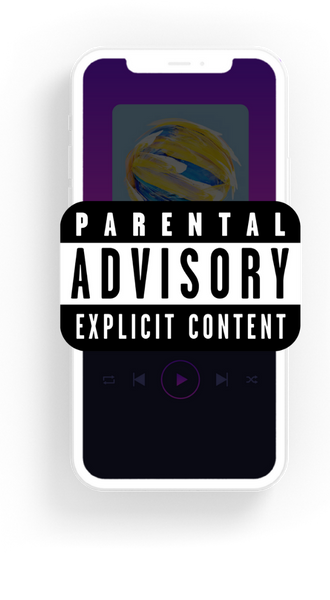ass/asshole, balls, bastard, bitch, goddamn, hoe, pissed/pissed off, son of a bitch, tits, whore, cock, dick, dickhead, pussy, snatch, twat, cunt, fuck/fucking, motherfucker, skank, slag, slut, nigger/nigga, fag/faggot
The Feed.fm Music Rating System
From clean to explicit, the Feed.fm music rating system enables businesses to define their music content strategy and enjoy peace of mind knowing that each song they stream is on brand and audience-appropriate.


The problem with clean vs. explicit lyrics
Brands need to feel confident that they are streaming audience-appropriate music to their customers. So how do businesses know which songs are suitable for their needs?
While some may rely on the Parental Advisory Label (PAL) "explicit" or "clean" tags on a track, it's important to know that this data point is inconsistent and unregulated. Furthermore, explicitness refers ONLY to the lyrics within each track and not necessarily the context in which those words are used.
A “clean” song contains no profanity.
An “explicit” song contains profanity.
A “censored” song originally contained profanity, but the words have been rendered inaudible for this version.
There is no universally accepted list of words or themes deemed to be explicit or profane by the music industry as a whole. The Parental Advisory Label (PAL) and metadata are supplied voluntarily by individual music labels in wildly inconsistent ways.

Why does it work?
Most people know intuitively that music is a motivator. And, there is an increasing body of research that shows music is performance-enhancing when paired with fitness. Music distracts from fatigue sensations, and athletes need less oxygen to do the same work. Pairing music and workouts delivers even stronger results when movements are synchronized to the music’s tempo.
And, not just any music will do . . .
How the Feed.fm music rating system works
Feed.fm designed an MPAA-style rating system to provide a more detailed level of classification to songs streamed through our unified music system (UMS).
Music is first categorized as clean, explicit, or censored based on the specific words, and then further categorized with a rating of G, PG, PG-13, R, or NC-17 based on words and themes (ie. sex, drugs, and/or violence). In addition to building out the ratings rubric and the initial music categorization work, we employ a customer support team whose quality assurance (QA) process includes screening approximately 4,000 songs each month for profanity and ratings compliance.
Now, Feed.fm customers can more precisely choose appropriate rating levels based on brand preferences & end users.
Feed.fm explicit words
Click here to view our list of explicit words
Feed.fm music rating definitions
For Everyone
Family-friendly, everyday language, no explicit themes.
Parental Guidance Suggested
Censored PG-13/R songs allowed; may contain mild violence and sex, no drugs; damn, hell or crap allowed.
Parents Strongly Suggested
Censored R songs allowed; some strong language, violence, sexual content or drug use.
Adult Required Under 17
Censored NC-17 songs allowed; strong profanity, intense violence, graphic sexual content or strong drug use.
No One Under 17
Censored R songs allowed; may include excessive violence, graphic sexual content, aberrational behavior, and drug abuse.
